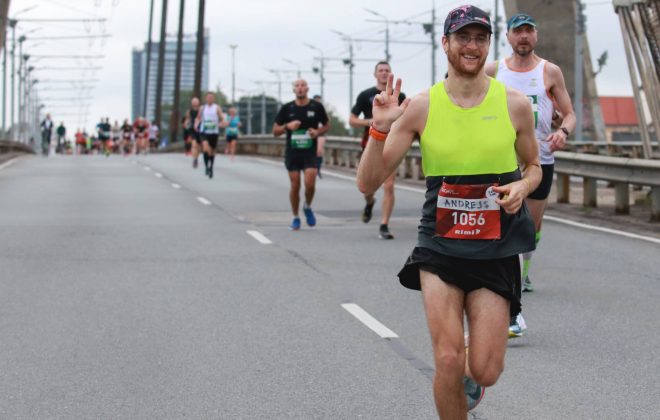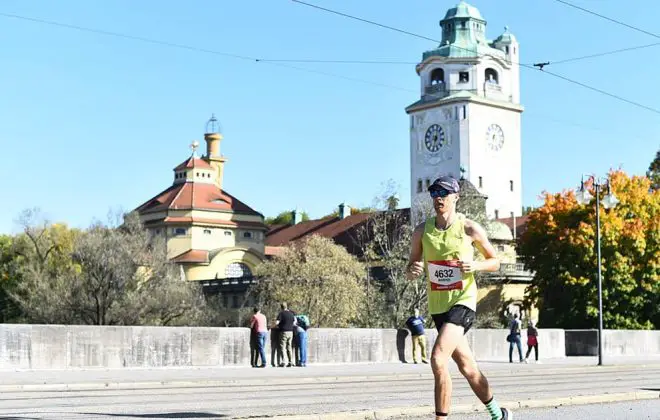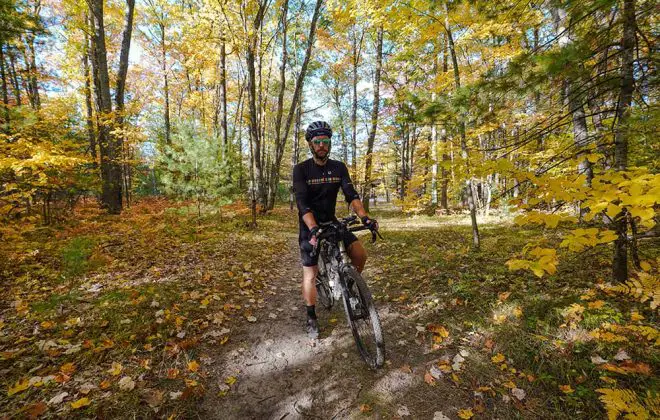Things Not To Do In Your First Triathlon – My Kraichgau 5150 Story
I was always intrigued by triathlon and wanted to try it out. The whole idea and challenge behind it seemed almost like an adventure and not sport to me. So, after doing a couple of marathons I felt it was time to step up and race my first triathlon.
This post is as much a mental note for myself on what not to do, as it is an advice for others preparing for their races.
My first triathlon
My original plan was to race a Half-Ironman (1.9K swim, 90K bike, 21.1K run) as my first triathlon. However, after I gave it another thought, I wasn’t comfortable with all the rules, transitions, logistics and small practicalities. So, I decided to do a practice race a couple of weeks before to test it out.
Kind of like a final rehearsal to see how everything works – no big deal.
The earliest possible race I could find on the calendar was Kraichgau 5150. It’s an Olympic distance event (1.5K swim, 40K bike, 10K run) exactly 2 weeks before my Luxembourg 70.3 race. And it’s almost 2x shorter – perfect rehearsal.
My plan was to have a long training session. Stick to Zone 3 throughout the race and get a feeling of the intensity I’ll maintain during the Half Ironman. It would have given me enough training benefit and time to recover for the main race.
It was a good plan. Too bad I didn’t stick to it …
The thing is that Kraichgau 5150 is actually a part of the Kraichgau 70.3 event where historically German pros start their season. This year both Jan Frodeno (2x IRONMAN World Champion in the past) and Patrick Lange (current IRONMAN World Champion) raced. How do you not get a competitive vibe by just being there?
View this post on InstagramAnd I didn’t even false start… Eyes on the prize 📷 @fx_makesapicture
A post shared by Jan Frodeno (@janfrodeno) on
Mistake #1 – wrong intention
That’s where my plan started to go sideways. Competitive vibe got to me and, somehow, my motivation changed.
In endurance events (if you’re a rookie) the best strategy is to leave your ego at the door. Save the energy, don’t go beyond limits in the first race and learn how the body responds.
I learned it the hard way in my first marathon. And, even though I had a plan, I seemed to have ignored it again in my first triathlon.
Related: Munich Marathon Race Review – My First Marathon Experience
My motivation was no longer to take it easy. Somehow I got into a mindset that it’s ‘only’ an Olympic-distance race. That’s just over 2 hours or so – why not go hard? I have more than enough time for a solid taper, but at least I’ll know my limits.
That kind of thinking should have been my first cue…

Mistake #2 – improper fueling leading up to the race
Problems started even before the gun went off.
The race was in the afternoon and I knew I wouldn’t get a ‘normal’ lunch before it. So, to be ‘on the safe side’, during breakfast I loaded on calories instead of thinking of optimizing my nutrition for performance. I hoped the food will digest before the race, yet immediately after breakfast I started experiencing a mild headache.
I didn’t practice such scenario in training, but thinking about this now, I can clearly see that so much food (simple carbs, primarily) for a 2-hour race was a bit of an overkill, to say the least.
A light breakfast and a couple of energy bars throughout the day would be enough.
Mistake #3 – too much time spent in the sun
To make things worse, this year was the ‘hottest’ race in the past 20 years with temperatures rising to +34 degrees. The race start was at 14:00 – full 5 hours later than the Half Ironman event. As I wanted to see pro athletes go through first transition, we checked out from the hotel and rushed to the start area at 9:00.
Spending all of the time between 9:00 and 14:00 in the car or under a tree in blazing heat upgraded my mild headache into a proper migraine.
By the time I started my warmup routine I was already tired and slightly dehydrated.
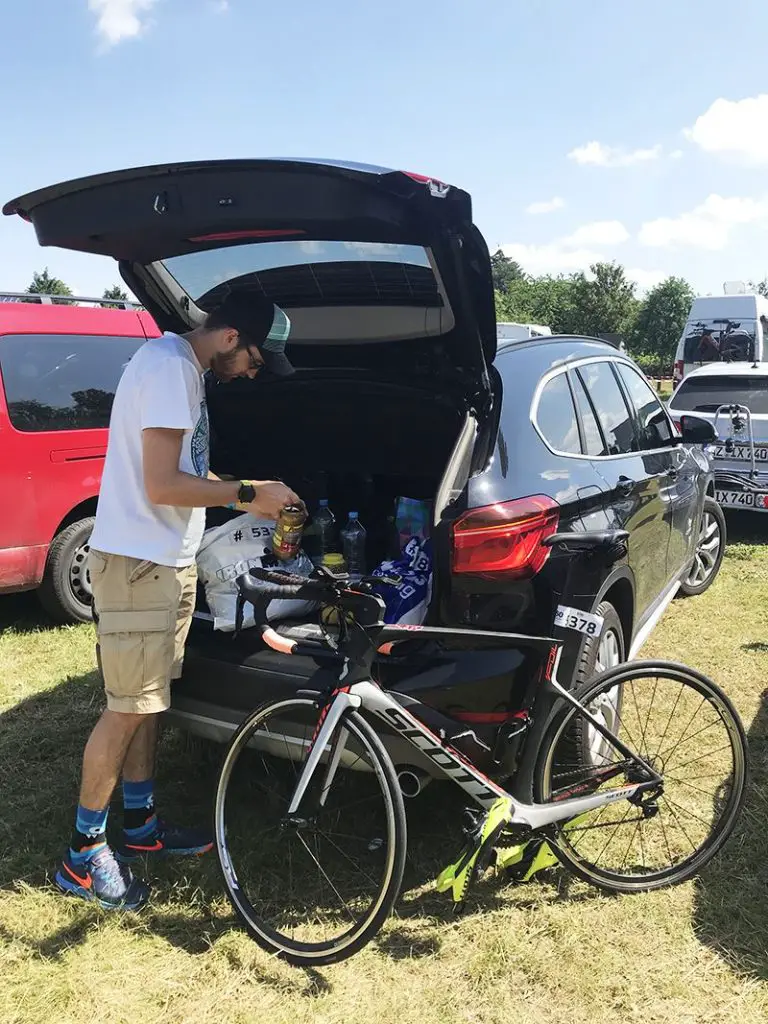
Mistake #4 – no proper swim warmup
Coming to the starting area I saw some of the people doing a practice swim. I thought about jumping in the lake before the race as well, but discarded the idea. I was really focused on doing my exercises and really undervalued the benefit of a practice swim.
Now that I think about – it was exactly what I should have done, considering the heat. Practice swim would have at least cooled me down and, potentially, eased my headache.
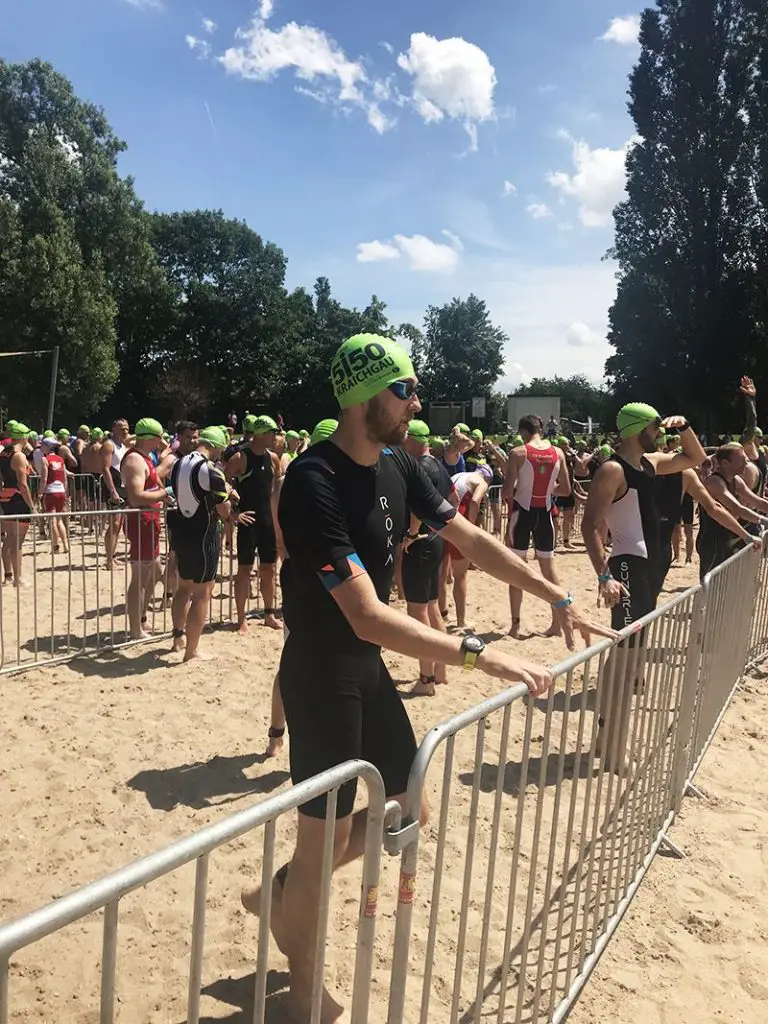
Mistake #5 – lack of specific swim practice
As the gun went off, I sprinted to the water and jumped in. For a couple of seconds I felt relaxed as the cool water refreshed my body.
As I started to get into the rhythm the reality set in. My shoulders were tightening up just after 500 meters. First signs of fatigue.
I though it will be an easy swim, but I didn’t consider it could be a no-wetsuit swim. All the buoyancy I was used to from my neoprene suit wasn’t there and, therefore, the speed was not what I expected.
Related: IRONMAN Austria Race Report – The Story Of My First Ironman Race
At this point I was learning the hard way how much proper body positioning (with or without a suit) is actually worth. I didn’t really train without a wetsuit much – I even did pool sessions with buoyancy shorts.
By 1000 meters I felt my technique is nowhere near optimal and my body totally out of alignment. Throughout the last 500 meters I was only trying to hold on.
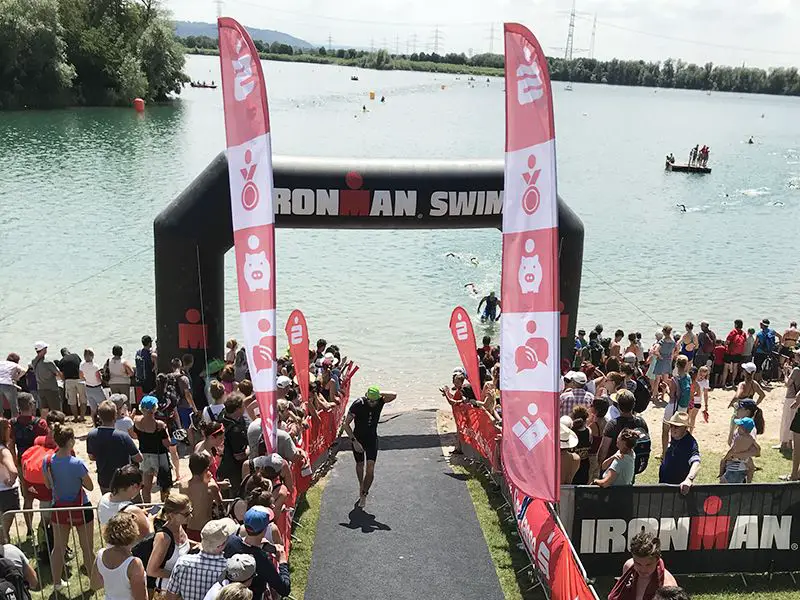
Mistake #6 – not getting familiarized with the course
After a very swift transition I hopped on a bike and started to ride as hard as I could. I really had no idea where the course is taking me. I only focused on the road ahead, not having a slightest idea of how steep or how long the ascent in front of me is.
40 kilometers is just over an hour, I thought. How hard can it be?
I never raced a bike in competition and didn’t know what to expect from my first triathlon. So, I looked at the people in front of me and tried to catch up with them.
The concept of conserving energy, saving something for the run or keeping it easy was removed from my memory that day. Such approach can’t possibly be healthy.
Nor was it safe, for that matter.
Mistake #7 – not practicing bike skills
To be fair, during my training rides I did ride similar courses with ‘rolling hills’ to familiarize myself with the concept of climbing. Not descents, though. Those that I did in training were all straight and with good visibility.
Basically, you can descend these on your aero bars without braking.
I didn’t really practice or knew how to descend properly and efficiently and I didn’t feel stable at all.
At around 20K mark there was one particularly long and smooth descent with almost no turns. A thought went through my mind – shouldn’t I keep my hands on the brakes while descending at 70 km/h?
I switched my hands from aero position to brakes and back several times. I really had no clear idea what I was doing at that moment, but focused on pushing on. Luckily, all went well.
Until the next descent.
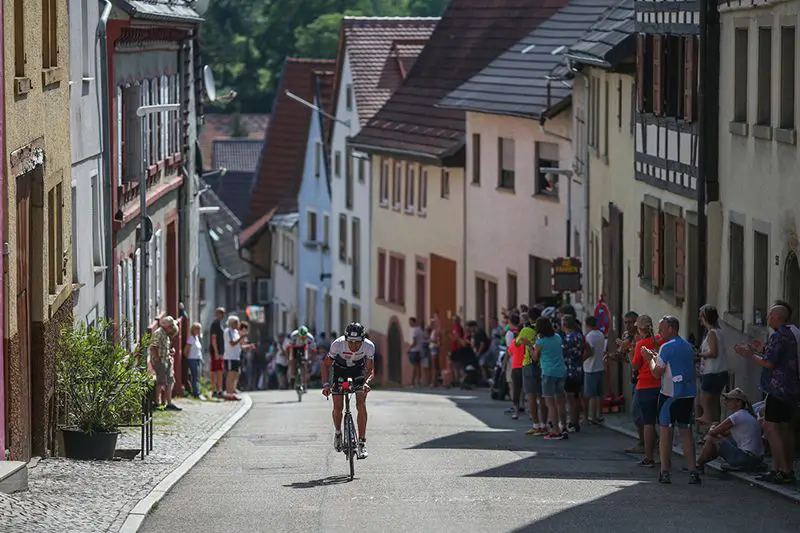
Result? DNF in my first triathlon
Still in the state of euphoria from the fast descent, I powered through a hill only to notice another descent in front of me. So, I was back in the aero position to get more speed.
This time, though, the descent went through a small town, much like the one on the picture above. The visibility was very impaired, as the road zigzagged its way down.
Gaining speed, I got distracted trying to see what lies ahead, figure out where do direction signs point to and reading ‘slow!’ markings on the road.
Noticing that I was quickly approaching the side of the road, my left hand reached for the front break, while my right hand stayed on the aero bars to keep the balance. Not a strong position whatsoever.
Seeing that there’s no way I’ll manage to brake or turn, I mentally accepted the fact that I’m going to crash.
Ironically, the thought that ran through my head just before crashing was that I’m going to scratch my bike. Again.
Lying on the side of the road
I don’t recall the moment of impact. Somehow my tired, dehydrated and oblivious mind decided not to store the memory of that. Instead, the very next thing I recall was lying on my side, right leg still clipped to my bike and staring at a concrete wall just centimeters in front of me.
Turned out, I hit a curb on the side of the road, gone down on my hip, slid towards someone’s driveway for several meters and stopped just before a concrete wall. Had there been a car parked, it could have gone much worse.
I checked my helmet – no signs of cracks. Good, I didn’t hit my head. Now arms & legs. A couple of hard bruises on the hip and elbow, but everything seems to move without much pain. Another good sign.
Next thing that went through my mind was if my bike is ok and if I can continue my first triathlon.
Not quite. From the looks of it, the wheel took the hardest hit and got crooked in such way that it was facing 45 degrees to the left from handlebars. Riding further in such condition was not an option.
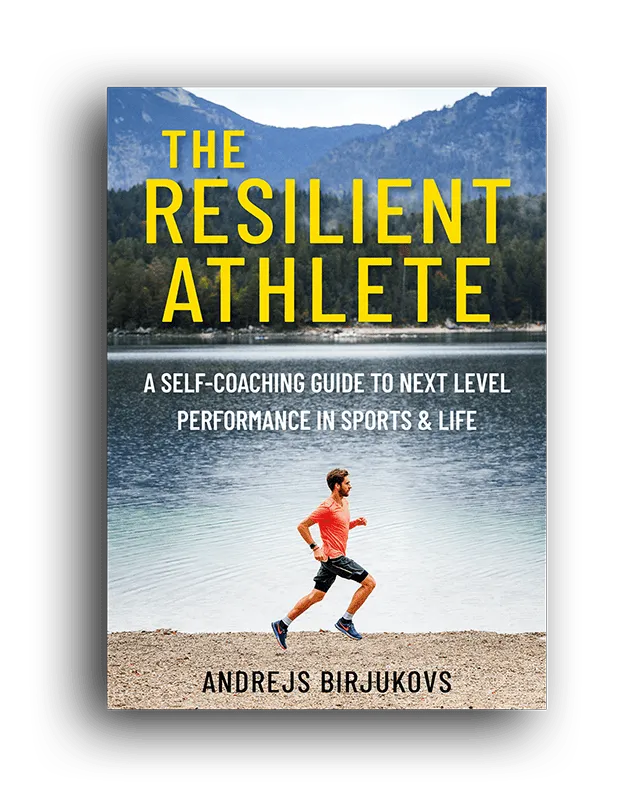
The Resilient Athlete
A Self-Coaching Guide to Next Level Performance in Sports & Life
Are you aiming to become a resilient athlete who is able to withstand any pressure? Be able to jump on any opportunity? Take any challenge life throws at you head on?
Then this book is for you.
Learn moreAnd then the medics came…
As I was inspecting my bike and figuring out how in the world I’ll bike 15 more kilometers until transition area (or 5 until the technician tent), the red cross volunteers appeared beside me.
By that time I got past the initial shock reaction and the pain in my hip and elbow started to grow. Volunteers helped me hobble down around 200 meters to the bottom of the descent where the medical tent was, so that I could sit down and they could inspect me.
The descent ended with a sharp 90-degree left turn, which was completely blocked from sight from where I crashed. Honestly, I didn’t want to imagine how I would have braked and maneuvered that turn in the position I was riding at the top of the hill (had I not crashed).
Medics, in the meantime, were spending quite a lot of time inspecting my elbow and repeating in German ‘Fraktur, Fraktur’. I was surprised they were not paying any attention to the hip, which – obvious to me – was hurting more. Can they not see it?
Game over
My feelings started coming back to me. As I was leaving the ‘beast mode’ I started feeling thirsty. In fact, so thirsty that my head started to turn. Seeing me in such state, even though I was fully aware of what is happening, doctors told me my race was over.
It was so weird – never did I have a situation when someone told me I can’t continue. It’s my body, after all – I only felt some pain in my hip, but not so bad that I couldn’t continue.
Then the reality settled in. I’m at least 5K away from a mechanical tent and there is no guarantee they’ll have the right TorX key for me to fix my handlebars. God knows what happened with the brakes. Riding with a crooked handlebar will, most probably, send me to the nearest ditch the minute I’ll try to brake.
On top of that, it was +33 heat and I had no water left.
I guess I’m in no position to argue. My first triathlon is officially over. And not how I wanted it to.
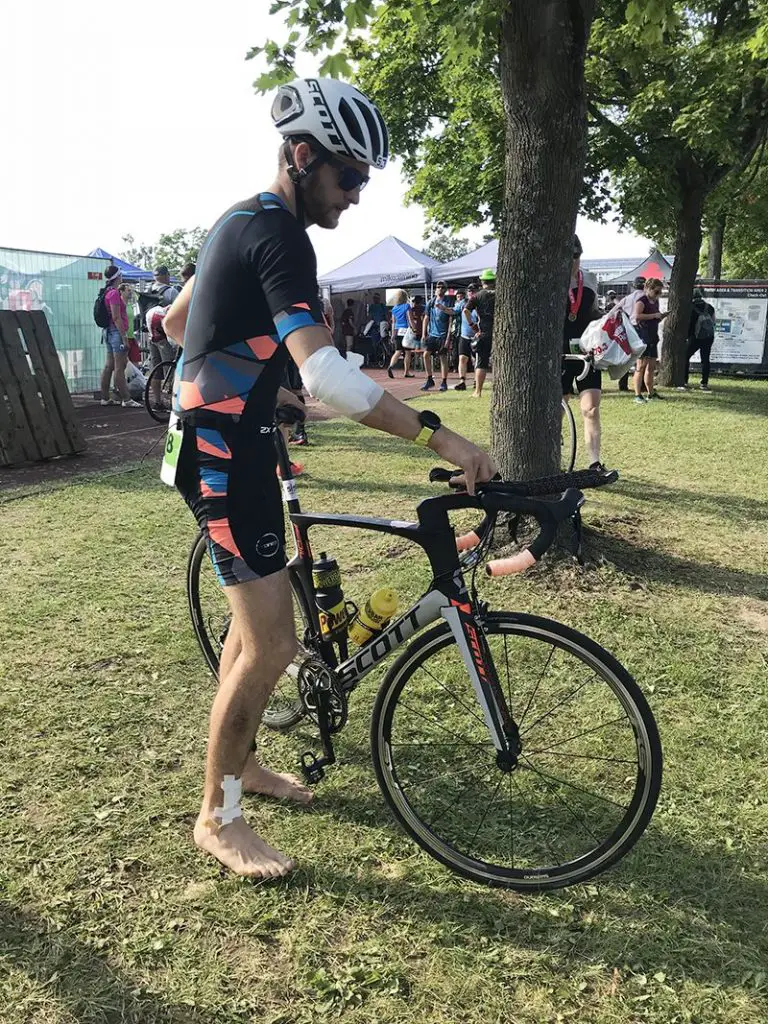
Bonus mistake #8 – don’t wait for the ‘sweeper’ car to take you back
In the end, with all the extra checks the doctors did to make sure I didn’t break any bone or suffered from heat stroke, I was well out of competing anyway.
They gave me 2 options – take me to the hospital for a tetanus shot or wait for a car to take me to the transition area.
I figured that coming from the hospital back to the transition area to collect my stuff would be a logistical nightmare, so I opted to drive to the hospital later myself and wait for the car instead. Another mistake.
It took full 40 minutes for the car to arrive and another 1.5 hours to drive 15 kilometers. Turns out, it was the ‘sweeper’ car that follows the last rider and opens the road to the public use.
If I knew how it works earlier, I would have just asked to call me a taxi…
Post-race analysis
It almost sounds silly, when I think about how many mistakes I made. And that’s with all the competitive experience I have. In fact, I raced in conditions much worse than that (with +40 degree heat, terrible rains, waves and winds, etc.).
It’s a good reminder that you can never be over-prepared. And with such complex and long-distance sport like triathlon, there’s a high chance of something going wrong on race day.
To be fully discreet, I did approach the race as a practice after all. It was not a priority race, so I allowed myself to try some new or crazy things, like ice baths the day before the race, large breakfast, intense pacing.
It’s easier to spot mistakes and tie everything together after the fact. In the moment the adrenalin doesn’t really allow to think clearly and evaluate, which is why it’s good to practice. I did learn a ton from this experience after all. As painful as it was.
And I did make some things right in my first triathlon.
What went well?
For starters, my fitness was really good. Even though I approached the race under a serious training load, I was actually quite confident I would be able to run well off such a hard bike leg. All Zone 3 intervals I did during long rides and standalone Zone 4 interval sessions really helped with that power and endurance.
Also, I tried a mini 2-3 day taper leading up to the race with 30-minute sessions at Zone 1 with 5-10 second Zone 5 pick ups. On top of that, I did 10-minute ice baths both evenings before the race, which brought a lot of freshness to my legs despite hard training in the weeks prior.
Finally, my transitions were very quick. I did practice running barefoot with my shoes clipped to my bike, as well as sorting out my stuff as efficiently as possible. As a result, it only took me seconds to take off my swimskin, put a helmet, bib number and sunglasses on.
My wife didn’t even manage to catch a glimpse of my transition after I ran past her at the swim exit.
What’s next?
As said, this was only a ‘painful training session’ before my actual first triathlon in Luxembourg. Having all the experience from this race, I think I did quite well there.
Have an opinion? Share via links below and tag @theathleteblog
Tags In
Andrejs Birjukovs
GET A FREE TRAINING PLAN
Subscribe to my email list and get access to a free 4-week “back in shape” training plan
You’ll also get two full-body strength sessions and some other goodies!
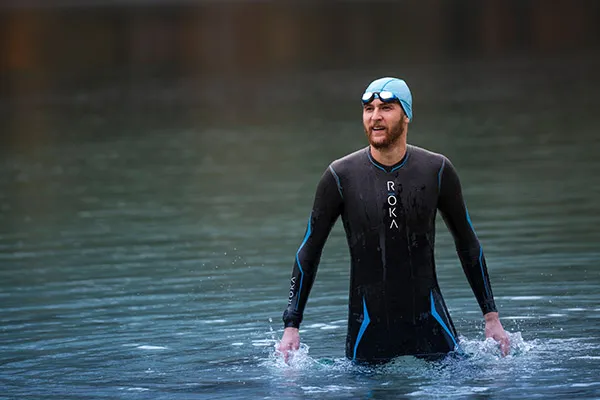
How did I get here?
Hey there! My name is Andrejs and I am here to inspire, entertain and get you fit for any adventure.
I went from being an over trained pro athlete to an endurance coach sharing how to listen to your body and live life to the fullest.
Traveling, new sports & activities brought new meaning to my training and made it much more effective, fun and enjoyable. And I'm here to help you do the same.
